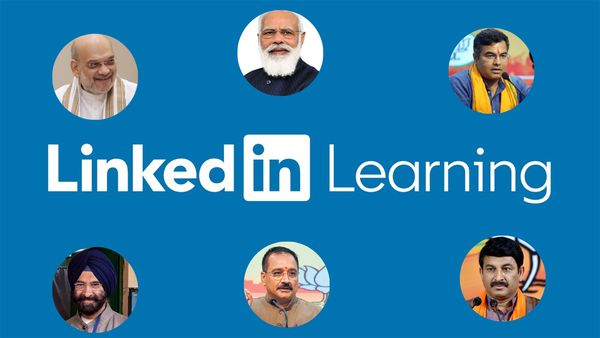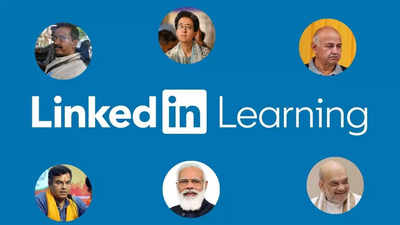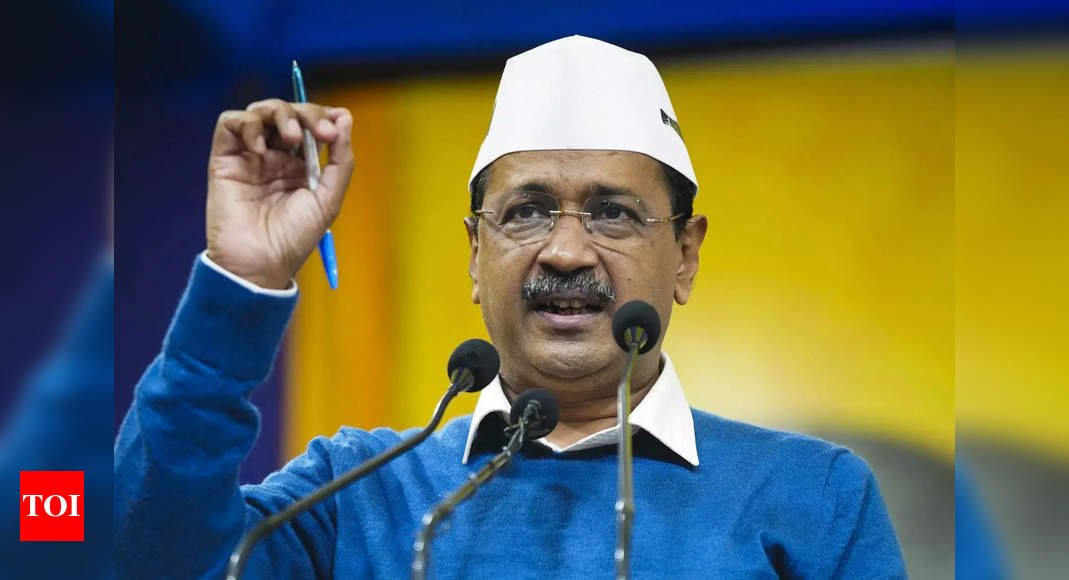Ah, another election, another flood of LinkedIn wisdom posts—where every poll result is a “case study,” every political leader is a “CEO,” and every campaign is an “MBA-level lesson in leadership.” Some call it democracy, but on LinkedIn, it’s all about business jargon and corporate analogies.
So, let’s break this down the LinkedIn way.
AAP: From Disruptor to Establishment to Decline
- AAP was the ultimate political startup—the kind that raises Series A, B, and C funding at record speed, becomes a unicorn, and then implodes under its own weight. It was supposed to be the alternative to traditional politics, the fresh face in a crowded market, a party that rejected caste, religion, and dynasty-driven politics.
- But somewhere along the way, it stopped being a startup and started behaving like an old-school corporate giant—bloated, bureaucratic, and overconfident.

1) From Lean & Agile to Bureaucratic & Slow
- AAP started with hyperlocal engagement, grassroots activism, and direct voter outreach—the political equivalent of a D2C brand shaking up a legacy market.
- Over time, it became centralized and top-heavy, with decision-making confined to a handful of leaders. MLAs became inaccessible, the leadership became distant, and ground-level mobilization weakened. No succession planning.
Kejriwal remained the sole face of the party, and there was no second-rung leadership strong enough to carry the brand forward. It failed to expand beyond Delhi and Punjab—despite trying in Goa, Gujarat, and Karnataka. The inability to scale beyond its original USP made it a regional player rather than a national force. - The result? Voters saw it as just another party, not the disruptor it once was.
2) A Reputation Built on Ethics, Lost to Scandals
- AAP built its brand on fighting corruption—but its own leadership got embroiled in one of the biggest scandals of its time, the liquor policy scam.
- Manish Sisodia, Sanjay Singh, and even Kejriwal himself faced corruption allegations, undoing years of anti-corruption positioning.
- The Sheesh Mahal controversy—where Kejriwal’s residence was allegedly renovated with ₹45 crore of taxpayer money—completely shattered the “humble leader” narrative.
- AAP’s response? Defensive, aggressive, and dismissive. Instead of damage control, it doubled down on denial—a classic PR blunder.
- The perception shift was swift and brutal—from “anti-corruption warriors” to just another power-hungry political entity.
3) Ignoring the Middle-Class Voter That Built Its Base
- AAP was originally the party of the middle class—frustrated taxpayers who wanted clean governance and economic relief.
- Over time, its focus shifted to freebies and populist policies, leaving the middle class feeling ignored.
BJP stepped in at the right time—offering tax reliefs, infrastructure promises, and a governance model that reassured middle-class voters.- Kejriwal’s pre-election outreach to the middle class felt forced and last-minute—while BJP had already solidified its positioning.
Takeaway ? A business (or party) that forgets its core customer will eventually lose them.
4) Blaming External Factors Instead of Owning Failures
- For 10 years, AAP blamed the Centre, the LG, and opposition parties for everything.
- The “victim card” was effective in the early years but wore thin by 2025—voters expected governance, not excuses.
- BJP flipped this weakness into an advantage, promising that with a BJP-led government, there would be no Centre-state conflicts, leading to “seamless governance.”
- The narrative changed from “AAP vs. BJP” to “AAP vs. Results.” Lesson? Leaders who constantly shift blame instead of delivering solutions lose credibility.
5) Strategic Missteps and Lack of Political Alliances
- AAP contested separately from Congress, which led to a split in the anti-BJP vote.
- Rahul Gandhi’s direct attacks on Kejriwal made matters worse—AAP was getting hit from both sides.
- Internal conflicts weakened the party further.
Atishi andSaurabh Bharadwaj were seen as Kejriwal’s successors, but there was no clear transition strategy.
BJP, on the other hand, had a structured, disciplined campaign with clear messaging and no internal rifts.
Delhi Election Results 2025
In politics and business, a divided team rarely wins.
BJP: A Masterclass in Strategic Adaptation

- BJP’s 2025 win in Delhi was not a Modi-centric sweep but a well-calibrated organizational comeback. After a lackluster 2024
Lok Sabha performance (by their standards), the party realized it had become too dependent on a single leader. - Unlike AAP, BJP adapted, restructured, and executed flawlessly.
1) Moving Beyond Modi Dependency
- BJP understood that Delhi’s electorate needed a more localized approach.
- Instead of making the election about Modi, it focused on governance, urban issues, and direct voter engagement.
- No CM face? It didn’t matter. The party projected collective leadership instead of relying on one individual.
- By decentralizing its campaign, BJP looked more stable and future-ready.
2) Adopting AAP’s Own Strategies Against It
- BJP neutralized AAP’s welfare advantage—promising free electricity, continued subsidies, and additional financial support for women.
- Middle-class tax reliefs were announced just before the elections, ensuring they won over voters that AAP had neglected.
- The manifesto focused on real urban issues—pollution control, traffic congestion, and infrastructure—exactly what AAP had failed to address convincingly.
- Lesson? The best way to beat a competitor is to adopt their strengths while exposing their weaknesses.
3) Letting Congress Do The Attacking
- BJP didn’t need to attack AAP aggressively—Rahul Gandhi and Congress did that for them.
- By letting AAP and Congress fight it out, BJP consolidated its voter base while the opposition split.
- AAP’s credibility suffered more because the attacks came from within the anti-BJP camp.
- A strategic win, without unnecessary effort.
4) A Disciplined, Focused, and Well-Executed Campaign
- BJP stayed on message, focusing on corruption, governance, and economic stability.
- The campaign was structured and well-planned, unlike AAP’s which seemed reactive and disorganized.
- The promise to investigate AAP’s corruption cases resonated with voters, reinforcing BJP’s stance on accountability.
- In business terms? BJP had a clear marketing strategy, strong brand positioning, and flawless execution.
5) Final Takeaways
- Adaptability is key. BJP recalibrated after its 2024 Lok Sabha setbacks, while AAP remained stagnant.
- Brand trust is fragile. AAP built its image on honesty but lost credibility due to scandals and mismanagement.
- Execution matters more than rhetoric. BJP delivered a disciplined, well-structured campaign.
- Leadership succession planning is critical. AAP failed to build second-line leadership, while BJP showcased organizational depth.
- Voters reward governance, not excuses. After a decade in power, AAP’s blame game no longer worked.
- Politics, like business, rewards those who adapt, execute, and deliver.




